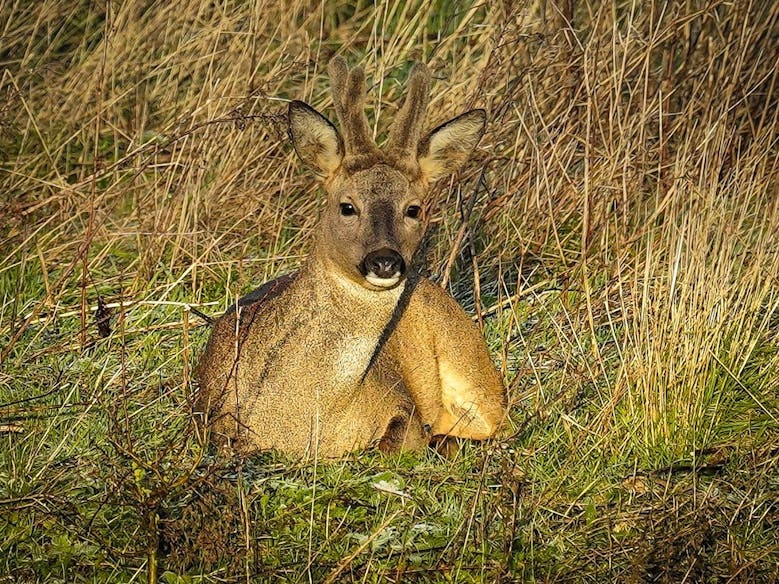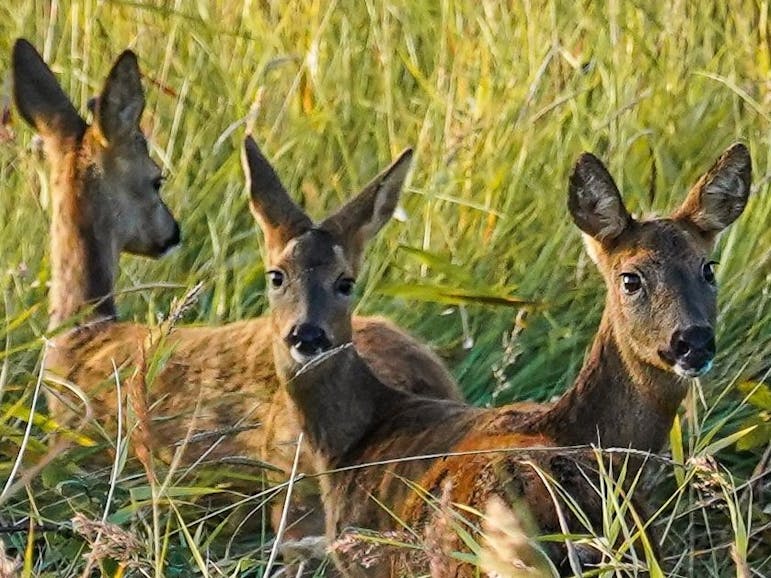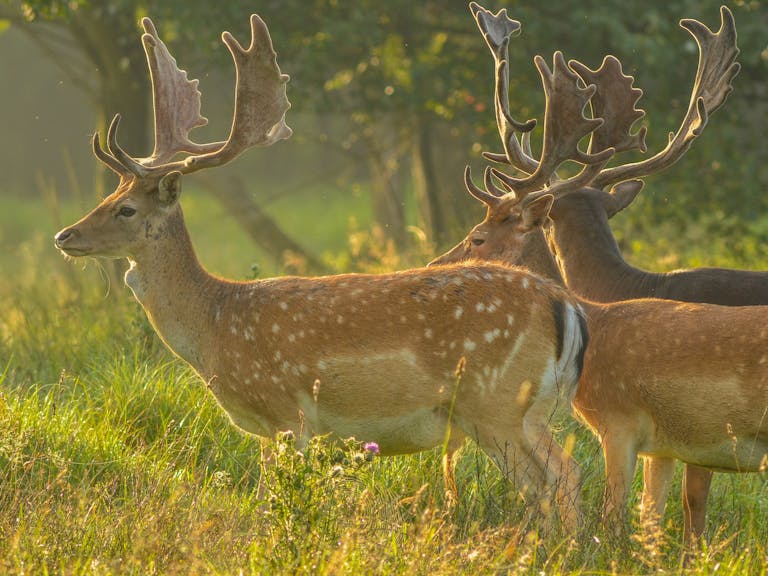Selsey's Deer
Visitor and residents of Selsey regularly get to spot deer in the grass and woodlands surrounding the town. Sometimes they've even been spotted exploring the local High Street at night!
The most common species of deer seen in and around Selsey are Roe deer (Capreolus capreolus), a native of the British Isles with records dating them back to the Mesolithic period (6000 to 10000 BC).
Roe deer are medium in size and vary in colour throughout the year, bright rusty red in the summer and a dull slate grey colour in the winter. The male and females both have a prominent white rump and no tail, although the females do have a small tuft of hair similar to a tail during the winter.
With large black eyes and their noses and mouths surrounded by pale, almost white, areas, Roe deers are very attractive. The males have small antlers which have three points at full growth. Both sexes have large ears and make dog-like barking noises when startled or alarmed.
A rarer sight is the Fallow deer (Dama dama) which are generally bigger than the Roe Deer and have much more variation in their coat colourings:
Common - a tan/fawn coat with white spotting on the sides and a white rump patch, outlined with a black horseshoe shaped border. This coat will fade to a grey colour in the winter.
Menil - a paler coloured coat with white spots all year round and a caramel colour horseshoe shape on the rump.
Melanistic - black or chocolate coloured.
White - pale sandy colour turning to almost entirely white with age.
The Fallow deer can also be differentiated by the length of their tails, the longest of all the deer found in the British Isles. Fallow deer are also the only species in Britain with palmate antlers: antlers with a broad flat section like a palm and tines leading from this like fingers.
Much rarer sightings are that of the Sika deer (Cervus nippon) or the Muntjac deer (Muntiacus reevesi).
A rarer sight is the Fallow deer (Dama dama) which are generally bigger than the Roe Deer and have much more variation in their coat colourings:
Common - a tan/fawn coat with white spotting on the sides and a white rump patch, putlined with a black horseshoe shaped border. This coat will fade to a grey colour in the winter.
Menil - a paler coloured coat with white spots all year round and a caramel colour horseshoe shape on the rump.
Melanistic - black or chocolate coloured.
White - pale sandy colour turning to almost entirely white with age.
The Fallow deer can also be differentiated by the length of their tails, the longest of all the deer found in the British Isles. Fallow deer are also the only species in Britain with palmate antlers: antlers with a broad flat section like a palm and tines leading from this like fingers.
Much rarer sightings are that of the Sika deer (Cervus nippon) or the Muntjac deer (Muntiacus reevesi).


